
Бази даних
Наукова періодика України - результати пошуку
 |
Для швидкої роботи та реалізації всіх функціональних можливостей пошукової системи використовуйте браузер "Mozilla Firefox" |
|
|
Повнотекстовий пошук
| Знайдено в інших БД: | Реферативна база даних (5) |
Список видань за алфавітом назв: Авторський покажчик Покажчик назв публікацій  |
Пошуковий запит: (<.>A=Horbiychuk M$<.>) | |||
|
Загальна кількість знайдених документів : 6 Представлено документи з 1 до 6 |
|||
| 1. | 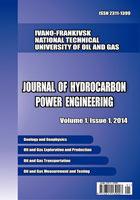
Horbiychuk M. Computer system of monitoring and forecasting of water level in rivers [Електронний ресурс] / M. Horbiychuk, M. Shufnarovych // Journal of hydrocarbon power engineering. - 2014. - Vol. 1, Iss. 2. - С. 123-129. - Режим доступу: http://nbuv.gov.ua/UJRN/jhpe_2014_1_2_9 | ||
| 2. | 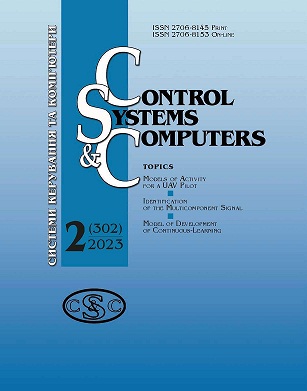
Horbiychuk M. I. Mathematical and Computer Modeling of Soil Contamination in Halych District Based on the Theory of Neural Networks [Електронний ресурс] / M. I. Horbiychuk, R. І. Khrabatyn, V. V. Bandura, N. C. Pasyeka, L. V. Samaniv // Управляющие системы и машины. - 2015. - № 4. - С. 83–85. - Режим доступу: http://nbuv.gov.ua/UJRN/USM_2015_4_11 Разработан метод математического моделирования загрязнения грунта на базе теории нейросистем. Метод опробован на фактическом материале, полученном вследствие геохимических исследований загрязнения территории Галичского района. В результате получено семейство линий изоконцентраций, нанесенных на ландшафтную карту территории. | ||
| 3. | 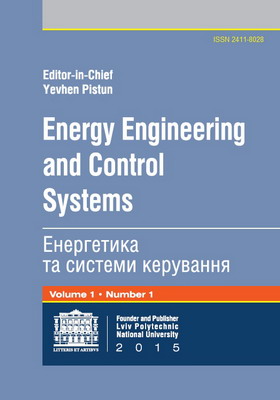
Horbiychuk M. Fuzzy Identification of Technological Objects [Електронний ресурс] / M. Horbiychuk, T. Humeniuk, D. Povarchuk // Energy engineering and control systems. - 2015. - Vol. 1, Num. 1. - С. 35-42. - Режим доступу: http://nbuv.gov.ua/UJRN/eecs_2015_1_1_9 На практиці, інформація про статистичні характеристики адитивної перешкоди, є доступною лише в окремих випадках. Більш того, вхідні величини з тих чи інших причин вимірюються неточно та їх значення можна вказати з деякою непевністю. Задача ідентифікація значно ускладнюється у тих випадках, коли вимірювальний сигнал проходить через природний канал із невідомими статистичними характеристиками. Така ситуація трапляється, наприклад, під час буріння свердловин, коли осьове навантаження на долото та частота його обертання вимірюються наземними приладами. Розроблено метод побудови емпіричних моделей поліноміального вигляду для випадку, коли вхідні фактори є нечіткими величинами з відомими функціями належності гаусового типу. Показано, що за таких умов вихідна величина моделі є також нечіткою величиною та одержано відповідну функцію належності, яка є основою для формування задачі ідентифікації. Для визначення параметрів моделі з нечіткими вхідними факторами використано метод найменших квадратів, що надало змогу одержати відповідну формулу, у структуру якої входить інформація про нечіткість вхідних факторів. | ||
| 4. | 
Horbiychuk M. Construction of Empirical Models of Complex Oscillation Processes with Non-Multiple Frequencies Based on the Principles of Genetic Algorithms [Електронний ресурс] / M. Horbiychuk, O. Bila, N. Lazoriv // Energy engineering and control systems. - 2019. - Vol. 5, Num. 1. - С. 29-38. - Режим доступу: http://nbuv.gov.ua/UJRN/eecs_2019_5_1_7 Розроблено метод побудови емпіричних моделей складних процесів на базі генетичних алгоритмів, що надає можливість, у порівнянні з індуктивним методом самоорганізації моделей, значно скоротити витрати машинного часу на їх реалізацію. Використано підхід, що надає можливість складну модель розглядати як композицію трьох складових - лінійного тренда, коливальної складової з некратними частотами і рівняння регресії, що спрощує процес побудови складних моделей. Для реалізації запропонованого методу розроблено алгоритмічне і програмне забезпечення. На конкретному прикладі залежності рівня води в р. Дністер від погодних умов показано, що модель, побудована на базі запропонованого методу, з достатньою точністю описує поведінку складних процесів. Отримана емпірична модель може бути використана для прогнозування рівня води залежно від погодних умов.Розроблено метод побудови емпіричних моделей складних процесів на базі генетичних алгоритмів, що надає можливість, у порівнянні з індуктивним методом самоорганізації моделей, значно скоротити витрати машинного часу на їх реалізацію. Використано підхід, що надає можливість складну модель розглядати як композицію трьох складових - лінійного тренда, коливальної складової з некратними частотами і рівняння регресії, що спрощує процес побудови складних моделей. Для реалізації запропонованого методу розроблено алгоритмічне і програмне забезпечення. На конкретному прикладі залежності рівня води в р. Дністер від погодних умов показано, що модель, побудована на базі запропонованого методу, з достатньою точністю описує поведінку складних процесів. Отримана емпірична модель може бути використана для прогнозування рівня води залежно від погодних умов. | ||
| 5. | 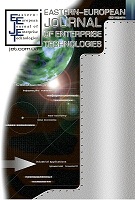
Horbiychuk M. Determining the effect of fuzziness in the parameters of a linear dynamic system on its stability [Електронний ресурс] / M. Horbiychuk, N. Lazoriv, L. Feshanych // Восточно-Европейский журнал передовых технологий. - 2021. - № 2(4). - С. 15-21. - Режим доступу: http://nbuv.gov.ua/UJRN/Vejpte_2021_2(4)__3 This paper considers a relevant issue related to the influence exerted by the fuzziness in linear dynamic system parameters on its stability. It is known that the properties of automated control systems can change under the influence of parametric disturbances. To describe the change in such properties of the system, the concept of roughness is used. It should be noted that taking into consideration the fuzziness in the parameters of mathematical models could make it possible at the design stage to assess all the risks that may arise as a result of an uncontrolled change in the parameters of dynamic systems during their operation. To prevent negative consequences due to variance in the parameters of mathematical models, automated control systems are designed on the basis of the requirement for ensuring a certain margin of stability of the system in terms of its amplitude and phase. At the same time, it remains an open question whether such a system would satisfy the conditions of roughness. Parameters of the mathematical model of a system are considered as fuzzy quantities that have a triangular membership function. This function is inconvenient for practical use, so it is approximated by the Gaussian function. That has made it possible to obtain formulas for calculating the characteristic polynomial and the transfer function of the open system, taking into consideration the fuzziness of their parameters. When investigating the system according to Mikhailov's criterion, it was established that the dynamic system retains stability in the case when the parameters of the characteristic equation are considered as fuzzy quantities. It has been determined that the quality of the system significantly deteriorated in terms of its stability that could make it enter a non-steady state. When using the Nyquist criterion, it was established that taking into consideration the fuzziness in the parameters of the transfer function did not affect the stability of the closed system but there was a noticeable decrease in the system stability reserve both in terms of phase and amplitude. The relative decrease in the margin of stability for amplitude was 16 %, and for phase - 17,4 %. | ||
| 6. | 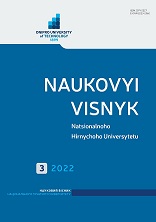
Horbiychuk M. I. Experimental research on muffle furnace dynamic properties [Електронний ресурс] / M. I. Horbiychuk, N. T. Lazoriv, M. I. Kohutyk, I. Z. Manuliak // Naukovyi visnyk Natsionalnoho Hirnychoho Universytetu. - 2023. - № 3. - С. 144-150. Purpose. To develop the method and software for building empirical models of muffle furnaces with two heating elements. Methodology. The method for processing experimental data according to the improved algorithm, which is based on the areas method, is used for constructing empirical models of the muffle furnace. Experimental research of the muffle furnace dynamic is conducted using the following methodology. The muffle furnace is cooled to the room temperature and then the lower heater is turned on and temperatures at the furnace output are fixed using the experimental two-channel temperature controller MIC-344. The second cycle of the experimental research began by cooling the furnace to the room temperature with turning on the upper heater. Observations based on the results of the experiment are conducted until the temperature is stabilized at the two outputs of the muffle furnace. Archiving of temperature trends is carried out using the RS485/Ethernet interface and the SmartReview software (a product of private limited company "Microl"). Findings. The developed software can be used for iteratively selection of the optimal empirical model based on the criterion of the root mean square deviation of the calculated and experimental data. The calculating method for the acceleration curve based on the transfer functions coefficients with a variable discreteness step is improved in order to compare the experimental data with the empirical modeling results. Twelve empirical models were tested for four signal transmission channels in the process of experimental research. It has been established that only four of them are stable (have left-hand roots of the characteristic equation). Among the selected sustainable models, the model with the numerator polynomial equaled to two and denominator polynomial equaled to three has been established as the best model (according to the established criterion). A structural diagram is created based on the synthesized empirical model of the muffle furnace, which includes four transfer functions and cross connections. Originality. For the first time, the empirical model of a muffle furnace with two electrical energy sources has been developed, which describes its dynamic properties as the object of automatic control with high accuracy, which enables to reveal the presence of internal cross-connections, that significantly complicate the controlling process of the object. Practical value. The created empirical models with two electric sources (tens) can be used for the synthesis of the high-precision automatic temperature control system of the muffle furnace. Повний текст публікації буде доступним після 01.07.2024 р., через 61 днів | ||
 |
| Відділ наукової організації електронних інформаційних ресурсів |
 Пам`ятка користувача Пам`ятка користувача |